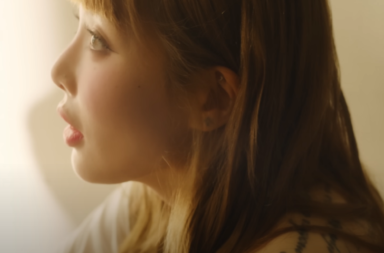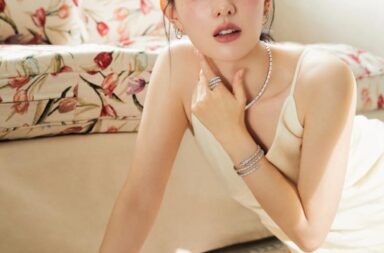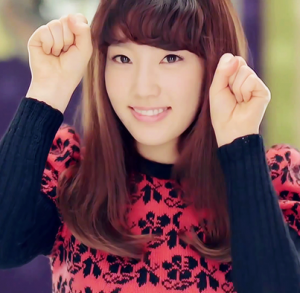 Aegyo – a concept that runs abundant in K-pop amongst its endless supply of female (and some male) idol groups that attempt to meticulously differentiate from one another, while oozing a sexy and seductive undertone veiled in an image of childlike innocence. It’s no surprise that this image, based on the artist’s perceived purity, is largely relegated to the genre of pop and dance tracks, styles of music that have given K-pop its international reputation. It also shouldn’t come as a shock that such a specifically overused image would seek to expand into other genres of music in order to create greater diversity and differentiation for artists who abide by aegyo conepts. And thus, the inevitable has happened. Aegyo has taken on hip hop.
Aegyo – a concept that runs abundant in K-pop amongst its endless supply of female (and some male) idol groups that attempt to meticulously differentiate from one another, while oozing a sexy and seductive undertone veiled in an image of childlike innocence. It’s no surprise that this image, based on the artist’s perceived purity, is largely relegated to the genre of pop and dance tracks, styles of music that have given K-pop its international reputation. It also shouldn’t come as a shock that such a specifically overused image would seek to expand into other genres of music in order to create greater diversity and differentiation for artists who abide by aegyo conepts. And thus, the inevitable has happened. Aegyo has taken on hip hop.
Hip hop – a genre of music developed by African-Americans that has evolved from an underground movement meant to give voice to the socially oppressed to a worldwide phenomenon that has been mainstreamed into submission. K-pop has been doing its fair share of incorporating hip hop elements into the mainstream. From the fashions sported by Big Bang in its earlier stages, to the mandatory inclusion of at least one rapper into every idol group, and to the female empowerment meets hip hop image that has been set forth by 2NE1, hip hop has been normalized into K-pop to the point where former underground acts have been included into the mainstream (Epik High), management labels are creating idol hip hop groups (Phantom), and young underground rappers can enter the industry by transitioning into idol rappers as part of a rookie group (Bang Yong-guk).
As hip hop becomes more and more popular in K-pop, it’s without question that there will be artists who seek to emulate and adapt it to fit with their specific image and sound, which is perfectly fine because international music is essentially about borrowing from the popular influences of other industries. However, this becomes problematic when certain elements are added simply for the sake of upping an artist’s “cool” factor while its being culturally appropriated in a way that is disrespectful (not to mention laughable) to the original product.
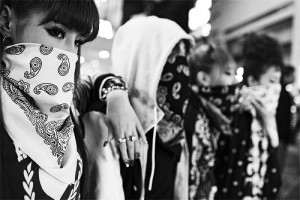 We’ve discussed before on this site, K-pop’s disconnect with the authentic culture of hip hop, and the lack of sensitivity shown towards the context from which hip hop originates. Hip hop contains a rich history that goes beyond the musical style and fashion that has become so popular nowadays. To don a bandana on one’s head or a handkerchief around one’s face is a reference to the American ghettos in which hip hop was born and nourished. Similarly, wearing a Native-American headdress is a reference to specific tribes that were obliterated by the genocide of disease and conquest in the historical movement known as Manifest Destiny. These examples tell us that borrowing from another culture merely for the sake of borrowing without any regard to the social and historical context behind what such cultural relics symbolize is downright disrespectful and insensitive to those international audiences who happen to take part in these victimized cultures.
We’ve discussed before on this site, K-pop’s disconnect with the authentic culture of hip hop, and the lack of sensitivity shown towards the context from which hip hop originates. Hip hop contains a rich history that goes beyond the musical style and fashion that has become so popular nowadays. To don a bandana on one’s head or a handkerchief around one’s face is a reference to the American ghettos in which hip hop was born and nourished. Similarly, wearing a Native-American headdress is a reference to specific tribes that were obliterated by the genocide of disease and conquest in the historical movement known as Manifest Destiny. These examples tell us that borrowing from another culture merely for the sake of borrowing without any regard to the social and historical context behind what such cultural relics symbolize is downright disrespectful and insensitive to those international audiences who happen to take part in these victimized cultures.
As for the sudden inclusion of hip hop into recent aegyo concepts, I can’t help but feel that this time it’s gone a bit too far. The most blatant example is indeed SNSD’s latest release, “I Got a Boy,” and I will get to that, but it doesn’t start there and it most likely won’t end there either. The process of turning hip hop into a genre of music that fits with the aegyo concept (from here on to be referred to as “aegyo hip hop”) started with the mainstreaming of K-pop’s most popular hip hop group, Epik High.
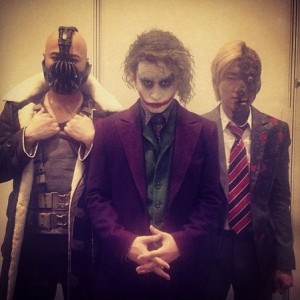 Before skipping to the comments section to complain about how I can possibly associate Epik High with aegyo, please consider the following notion. Epik High is the industry pioneer of mainstream hip hop in that it was the first underground group to achieve significant mainstream success. With its return under the YG label, it’s unarguable that Epik High conveyed an entirely different image, one which is certainly more family friendly. Instead of the emotional artistry that one came to expect with the old Epik High, the new Epik High carries with it a more colorful aesthetic that is meant to appeal to a much broader audience. Look no farther than its performance on MNet’s Asian Music Awards as a reference to exactly how appealing it’s become to different demographics.
Before skipping to the comments section to complain about how I can possibly associate Epik High with aegyo, please consider the following notion. Epik High is the industry pioneer of mainstream hip hop in that it was the first underground group to achieve significant mainstream success. With its return under the YG label, it’s unarguable that Epik High conveyed an entirely different image, one which is certainly more family friendly. Instead of the emotional artistry that one came to expect with the old Epik High, the new Epik High carries with it a more colorful aesthetic that is meant to appeal to a much broader audience. Look no farther than its performance on MNet’s Asian Music Awards as a reference to exactly how appealing it’s become to different demographics.
Aside from the issue of how much Epik High has changed under YG, it’s important to note that its transformation reflects the public’s growing acceptance of hip hop as a mainstream genre. Such a change is inevitable as we see parallel examples in American hip hop with the likes of Snoop Lion, Ice Cube, and LL Cool J who all tailored their images from gangster rappers to family friendly entertainers as the general public gradually became more accepting of their music and their place in the industry. In comparison, Epik High’s YG transformation represents a familiarizing of the general public to hip hop, showing that the genre can be entertaining and fun for the entire family. While I’m not going to argue that “Don’t Hate Me” was the first instance of aegyo hip hop, the MV is rather striking for how cute it made hip hop seem. Murderous children running around in Halloween costumes doesn’t necessarily fall into the realm of aegyo, but it certainly does break ground in making hip hop something it rarely is – cute.
As for the first true appearance of aegyo hip hop, that honor is bestowed upon HyunA in her most controversial track to date, “Ice Cream.” Some may argue that f(x) were the originators who blended aegyo with hip hop. While it’s true that there are a few hip hop elements in their promoted releases like the use of talk-sing, bass-laden beats, and rap; their music falls more into the category of pop and their aesthetics are definitely…something, but (for the sake of fans of genuine hip hop) I would not dare categorize it as hip hop.
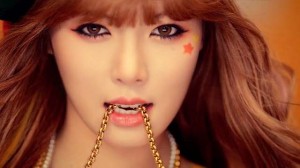 On the other hand, it’s much clearer that “Ice Cream” sounds more or less like a hip hop track with a hip hop concept. It’s no coincidence that HyunA sports a sideways cap, bandana, and beanie while showing off her tattoos and bling in the midst of what seems to be a warped block party burdened by an ice cream truck decked out in graffiti. Furthermore, make no mistake that there is a specific brand of aegyo on display. HyunA’s aegyo is surely more sexified than others, but it’s undeniable that she is going for a cutesy image that is meant to override her blatant sexuality. The exaggerated sound effects and reactions in the intro scene with Psy, the huge ring on her finger, her wearing a Mickey Mouse hat, and her high pitch rap are just a few of the aegyo signifiers which are meant to blend in with the sexy confidence that is generally associated with the hip hop image.
On the other hand, it’s much clearer that “Ice Cream” sounds more or less like a hip hop track with a hip hop concept. It’s no coincidence that HyunA sports a sideways cap, bandana, and beanie while showing off her tattoos and bling in the midst of what seems to be a warped block party burdened by an ice cream truck decked out in graffiti. Furthermore, make no mistake that there is a specific brand of aegyo on display. HyunA’s aegyo is surely more sexified than others, but it’s undeniable that she is going for a cutesy image that is meant to override her blatant sexuality. The exaggerated sound effects and reactions in the intro scene with Psy, the huge ring on her finger, her wearing a Mickey Mouse hat, and her high pitch rap are just a few of the aegyo signifiers which are meant to blend in with the sexy confidence that is generally associated with the hip hop image.
Moving on to the rookie group Glam, who after hinting at a hip hop concept in their debut, go hip hop heavy with a powerful beat, hip hop aesthetics, and accompanying choreography with their latest release, “I Like That.” Again, there is the necessary bandana, beanie, backwards cap, display of bling, and graffiti in the background to indicate a hip hop image, this time combined with break dancing and an assortment of hip hop choreography (did I see a crip walk and dougie?). The aegyo is supplied by the wide eyed expressions and the overall childish behavior of the girls in the horror-themed alternate reality sequence. The aegyo isn’t overflowing but it’s unmistakably present and intertwined with the hip hop elements.
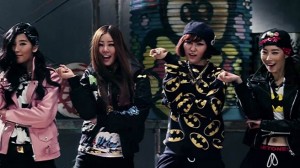 Furthermore, there is a reference to popular culture that is noticeably apparent in each of the MVs mentioned above. Epik High went overboard in bringing a boatload of movie villains to life in “Don’t Hate Me,” including several villains from The Dark Knight film franchise. “Ice Cream” mentions Batman in one of the protestors’ signs. Glam also plays the pop culture card by referencing The Simpsons (Homer’s drink of choice, Duff Beer), Freddy Kreuger (his claws coded in bling), and of course, Batman (his symbol is seen on a t-shirt, long sleeve, and sweater). It seems that it’s become a trend to deploy pop culture references in MVs (also see AOA’s “Get Out”), and its inclusion in aegyo hip hop is further evidence of an attempt to make hip hop more friendly and acceptable to a general audience.
Furthermore, there is a reference to popular culture that is noticeably apparent in each of the MVs mentioned above. Epik High went overboard in bringing a boatload of movie villains to life in “Don’t Hate Me,” including several villains from The Dark Knight film franchise. “Ice Cream” mentions Batman in one of the protestors’ signs. Glam also plays the pop culture card by referencing The Simpsons (Homer’s drink of choice, Duff Beer), Freddy Kreuger (his claws coded in bling), and of course, Batman (his symbol is seen on a t-shirt, long sleeve, and sweater). It seems that it’s become a trend to deploy pop culture references in MVs (also see AOA’s “Get Out”), and its inclusion in aegyo hip hop is further evidence of an attempt to make hip hop more friendly and acceptable to a general audience.
Finally, we arrive at the ladies of the moment, the group whose long awaited return resulted in a fashion and musical overhaul. As mentioned by Gaya in her review of “I Got a Boy,” SNSD’s venture into hip hop was a poorly misguided attempt at progressing the group’s image and music. We are treated to the same aegyo of yesteryear, but this time it’s packaged with colorful and oxymoronic hip hop aesthetics glazed over a schizophrenic song which at times feel like hardcore hip hop with heavy rap verses and in others feel like standard electro pop fare. As expected, the girls don sideways caps, bandanas, and beanies, with just a hint of graffiti in the background. Adding to their repertoire, the ladies sport vintage sneakers, stunner shades, a golf cap, and athletic apparel while integrating a loose hip sway and even some booty shaking into their choreography for extra swag points.
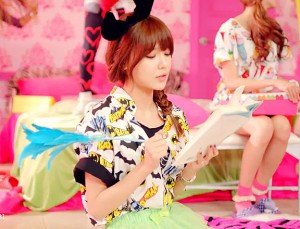 Despite the heavy foray into pulling off a hip hop concept, the aegyo for which the group has popularized over the years is nonetheless ever the more present. From the sleepover setting with again the cartoonish sound effects, to the girls’ bewildered reactions in their interactions with the boy (which is hilariously pointed out in Dana’s analysis of the song’s teaser), and of course an endless barrage of signature aegyo poses, it’s quite apparent that SNSD has yet to move away from its original cutesy image. The hip hop concept is simply a façade designed to trick audiences into thinking that SNSD has matured when in reality all it’s done is borrow the same elements as those before them (Batman references included), throw in a few additional items, and plainly layer over its aegyo interior with a tougher exterior (most exemplified by the censored words on Seohyun’s cap, “Welcome MotherF*ckers”).
Despite the heavy foray into pulling off a hip hop concept, the aegyo for which the group has popularized over the years is nonetheless ever the more present. From the sleepover setting with again the cartoonish sound effects, to the girls’ bewildered reactions in their interactions with the boy (which is hilariously pointed out in Dana’s analysis of the song’s teaser), and of course an endless barrage of signature aegyo poses, it’s quite apparent that SNSD has yet to move away from its original cutesy image. The hip hop concept is simply a façade designed to trick audiences into thinking that SNSD has matured when in reality all it’s done is borrow the same elements as those before them (Batman references included), throw in a few additional items, and plainly layer over its aegyo interior with a tougher exterior (most exemplified by the censored words on Seohyun’s cap, “Welcome MotherF*ckers”).
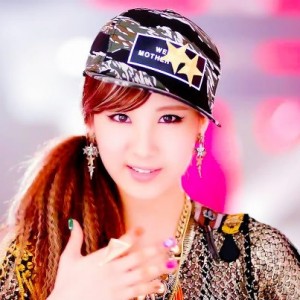
Now for the reason as to why aegyo hip hop has led me to this elongated rant. Aegyo and hip hop is contradictory by definition because aegyo implies an unquestioned submissiveness whereas hip hop brings with it a history of resistance. The combination of the two creates a messy product which benefits the importing culture at the expense of shunning the exporting one. K-pop has shown that it can care less about victimizing other cultures as long as the resulting product provides the industry with a selling point. The industry has shown time and again that it can care less about polarizing foreign cultures through its insensitive representations of African-Americans, Native-Americans, Indians, and Caucasians. Unfortunately for K-pop’s diverse international fandom, there is simply not enough collective resistance to bring an end to this. With the adaptation of aegyo hip hop by none other than the industry’s leading girl group, expect others to follow suit. After all, SNSD did usher in a wave of New Jack Swing with their previous release, “The Boys.”
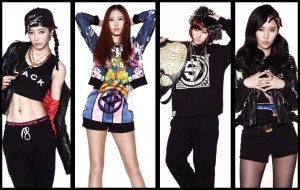 Aegyo’s encounter with hip hop has not only been messy, but it’s been detestable. As mentioned before, there are certain hip hop elements that just aren’t supposed to be transferred outside of their cultural context. The music and the artistry of hip hop is fair game, but the aesthetics which particularly belong to African-American culture aren’t meant to be freely transmitted to other cultures, especially to one which doesn’t share a similar history of oppression! In order to rock a cap with a do-rag or display a tattoo located under one’s eye, artists must understand the origins and cultural significance behind such a fashion statement and present these elements carefully and appropriately in their work. To senselessly apply these fashion choices to an image which neglects hip hop’s cultural context and applies them in such a contradictory manner is highly distasteful and the most criminal form of cultural appropriation.
Aegyo’s encounter with hip hop has not only been messy, but it’s been detestable. As mentioned before, there are certain hip hop elements that just aren’t supposed to be transferred outside of their cultural context. The music and the artistry of hip hop is fair game, but the aesthetics which particularly belong to African-American culture aren’t meant to be freely transmitted to other cultures, especially to one which doesn’t share a similar history of oppression! In order to rock a cap with a do-rag or display a tattoo located under one’s eye, artists must understand the origins and cultural significance behind such a fashion statement and present these elements carefully and appropriately in their work. To senselessly apply these fashion choices to an image which neglects hip hop’s cultural context and applies them in such a contradictory manner is highly distasteful and the most criminal form of cultural appropriation.
Am I not the only one who finds this latest form of cultural appropriation a bit unnerving? What are our readers’ thoughts on this trend of aegyo hip hop? Is it here to stay? Leave your comments and opinions below!
(Images via SM Entertainment, YG Entertainment, Mnet, Cube Entertainment, Big Hit Entertainment)

